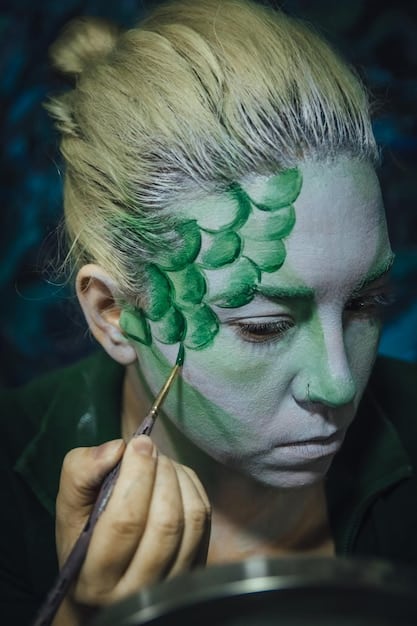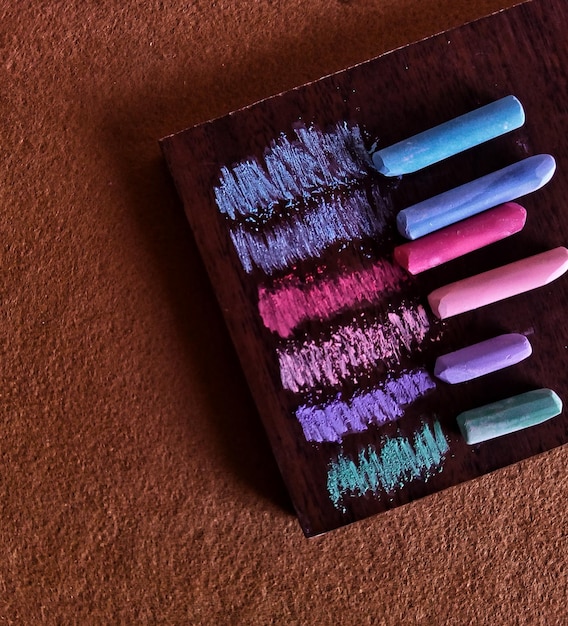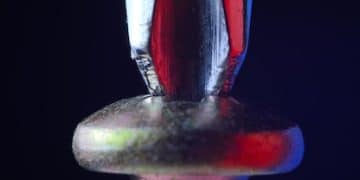Cosplay Body Painting Techniques: Achieve Flawless, Lasting Results

Cosplay body painting techniques involve understanding color theory, selecting appropriate paints, using the right tools, and applying effective sealing methods to create smooth, long-lasting results.
Achieving a flawless and long-lasting body paint for your cosplay can seem daunting, but with the right knowledge and techniques, you can transform yourself into any character you desire. This guide will walk you through essential cosplay body painting techniques: achieving smooth and long-lasting results.
Understanding the Basics of Cosplay Body Painting
Before diving into the application process, it’s crucial to understand the fundamental principles of body painting. This involves everything from skin preparation to the selection of appropriate materials. Let’s explore the essential groundwork for achieving a professional cosplay body painting result.
Skin Preparation: The Foundation for Success
Proper skin preparation is often overlooked, yet it is paramount for a smooth and long-lasting body paint application. Clean, moisturized skin provides an ideal canvas.
- Exfoliation: Gently exfoliate your skin 24 hours before applying body paint to remove dead skin cells.
- Cleansing: Clean your skin thoroughly with a mild, oil-free cleanser to remove any oils, dirt, or makeup residue.
- Moisturizing: Apply a lightweight, oil-free moisturizer to hydrate your skin, allowing it to absorb fully before painting.
Choosing the Right Body Paint
Selecting the appropriate type of body paint is crucial for both the aesthetic appeal and the longevity of your cosplay. Different types of paints offer varying levels of coverage, durability, and safety.
When choosing paints, consider water-based paints for easy removal and vibrant colors, alcohol-based paints for durability and sweat-resistance, and hybrid paints for versatility.
Ultimately, understanding these basics sets the stage for a more successful and enjoyable body painting experience, leading to a cosplay that truly stands out.

Essential Tools and Materials for Body Painting
Having the right tools and materials at your disposal can significantly impact the quality and efficiency of your body painting endeavor. From brushes to sponges, each tool serves a unique purpose in achieving a flawless finish. Let’s explore the must-have items for your body painting toolkit.
Brushes: Precision and Detail
Brushes are essential for intricate details, fine lines, and controlled application. A variety of brush sizes and shapes should be included in your toolkit.
- Fine Liner Brushes: Ideal for creating thin lines and intricate patterns.
- Flat Brushes: Perfect for applying base colors and covering large areas.
- Angled Brushes: Suitable for creating precise edges and contouring.
Sponges: Smooth and Even Coverage
Sponges are excellent for achieving smooth, even coverage across large areas of the body. Different types of sponges offer varying textures and finishes.
Consider using sea sponges for a natural, stippled texture, makeup sponges for seamless blending, and foam sponges for controlled application.
Setting Sprays and Sealants: Securing Your Art
Setting sprays and sealants are crucial for ensuring your body paint lasts throughout your cosplay event. They protect against smudging and fading.
Ultimately, these tools and materials are indispensable for achieving a high-quality, long-lasting body paint, allowing you to fully embody your chosen character and enjoy your cosplay experience to the fullest.
Mastering Color Theory for Cosplay Body Painting
Color theory is a vital aspect of cosplay body painting, influencing the depth, realism, and emotional impact of your design. Understanding how colors interact and complement each other can elevate your artistry. Let’s delve into the essential principles of color theory to enhance your body painting skills.
Understanding the Color Wheel
The color wheel is a visual representation of colors and their relationships, serving as a valuable tool for artists. It consists of primary, secondary, and tertiary colors.
Primary colors (red, yellow, blue) are the foundation of all other colors. Secondary colors (green, orange, purple) are created by mixing two primary colors. Tertiary colors are formed by mixing a primary color with a neighboring secondary color.
Mixing and Blending Colors
Mixing and blending colors effectively is essential for achieving the desired skin tones, shading, and highlights in your body paint design.
- Start with Small Amounts: Add colors gradually for precise control.
- Use a Palette: Mix colors on a palette rather than directly on the skin.
- Blend Thoroughly: Ensure colors are fully blended to avoid streaks.
By mastering color theory, you can create stunning body paint designs that capture the essence of your character and elevate your cosplay to new heights.

Application Techniques for a Flawless Finish
The application of body paint requires technique and precision to achieve a flawless, even finish. Applying the paint correctly ensures a vibrant, long-lasting result that accurately brings your chosen character to life. Let’s explore proven methods for an impeccable body paint application.
Layering Techniques
Layering is a fundamental technique in body painting. Applying thin, even layers allows for better control over color intensity and blending.
Begin with a base coat to create a uniform canvas. Add subsequent layers gradually, allowing each layer to dry before applying the next. Blend layers seamlessly for a natural, gradient effect.
Stenciling and Detailing Techniques
Stenciling and detailing are essential for creating intricate patterns and designs. Stencils provide precise outlines, while detailing enhances realism.
- DIY Stencils: Craft your own stencils using acetate or stencil paper for unique designs.
- Precision Brushes: Use fine liner brushes for intricate detailing work.
- Steady Hand: Maintain a steady hand while outlining and filling in stencil designs.
By mastering these application techniques, you can achieve a flawless, realistic body paint that elevates your cosplay and captures the essence of your character.
Sealing and Setting Your Body Paint
Sealing and setting your body paint are critical steps to ensure its longevity and prevent smudging or fading throughout your cosplay event. Proper sealing methods safeguard your artistic effort, maintaining its vibrancy and integrity. Let’s examine the key processes for effectively sealing and setting your body paint.
Choosing the Right Sealant
Selecting the appropriate sealant is crucial for protecting your body paint without compromising its appearance. Different sealants offer varying levels of protection and finishes.
Consider using aerosol sealants for an even, lightweight coating. Opt for matte sealants to reduce shine and maintain a natural look. Test the sealant on a small area of your skin to ensure compatibility and prevent allergic reactions.
Application Techniques for Sealants
Applying sealant correctly is essential for maximizing its protective benefits. Proper technique ensures even coverage without causing streaks or clumping.
- Hold Aerosol Can at a Distance: Maintain a distance of 12-18 inches while spraying.
- Apply in Light, Even Strokes: Use short, sweeping motions to avoid saturating the paint.
- Multiple Thin Coats: Apply several thin layers, allowing each to dry completely before the next.
By executing these sealing and setting techniques, you can confidently wear your body paint, knowing it’s well-protected and will remain vibrant throughout your cosplay event.
Maintaining and Removing Body Paint Properly
Proper maintenance and removal of body paint are crucial for skin health and the longevity of your cosplay materials. Caring for your skin and cleaning off the paint effectively ensures comfort and prevents irritation. Let’s explore the best practices for maintaining and removing body paint safely.
Maintaining Body Paint During Cosplay Events
Maintaining your body paint throughout cosplay events requires attention to detail and proactive measures. Preventing smudging and touch-ups can keep your design looking fresh.
Carry a small kit with touch-up paints, sponges, and setting spray. Avoid excessive sweating by staying cool and hydrated. Gently blot away any moisture rather than wiping, which can cause smudging.
Safe and Effective Removal Techniques
Removing body paint gently and thoroughly is essential to avoid skin irritation. Different types of paints require specific removal methods.
Consider using oil-based makeup removers for heavy paints. Gently massage the remover onto your skin to loosen the paint. Use a soft cloth or sponge to wipe away the residue, followed by a mild cleanser and moisturizer.
By adhering to these maintenance and removal practices, you ensure the health of your skin and the durability of your cosplay, allowing you to enjoy your character embodiment fully.
| Key Point | Brief Description |
|---|---|
| 🎨 Skin Prep | Exfoliate, cleanse, and moisturize for a flawless paint base. |
| 🖌️ Layering | Apply thin, even layers for better color control. |
| 🛡️ Sealing | Use sealant to protect against smudging and fading. |
| 🧼 Removal | Gently remove with oil-based cleanser to avoid irritation. |
Frequently Asked Questions
▼
Start by exfoliating to remove dead skin, then cleansing to eliminate oils and dirt. Finish by moisturizing with an oil-free product, allowing it to absorb fully before painting.
▼
Apply body paint in thin, even layers, allowing each layer to dry completely before applying the next. Avoid excessive movement and use a quality setting spray for extra hold.
▼
Opt for a matte aerosol sealant designed for makeup. Apply in light, even strokes from a distance to avoid saturation and streaks. Multiple thin coats work best.
▼
Carry a small kit with touch-up paints, sponges, and setting spray. Gently blot (don’t wipe) to avoid smudging, then reapply paint as needed, sealing with setting spray.
▼
Use an oil-based makeup remover to gently loosen the paint. Follow up with a soft cloth and a mild cleanser. Always moisturize thoroughly to replenish your skin’s hydration.
Conclusion
Mastering the art of cosplay body painting techniques: achieving smooth and long-lasting results involves a combination of preparation, technique, and maintenance. By understanding color theory, selecting the right tools, and employing careful application and sealing methods, you can create stunning, durable designs that bring your cosplay visions to life.





